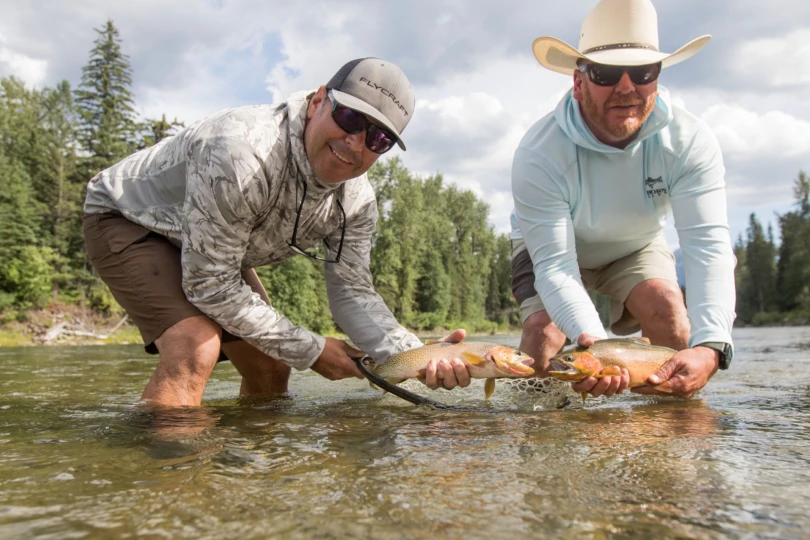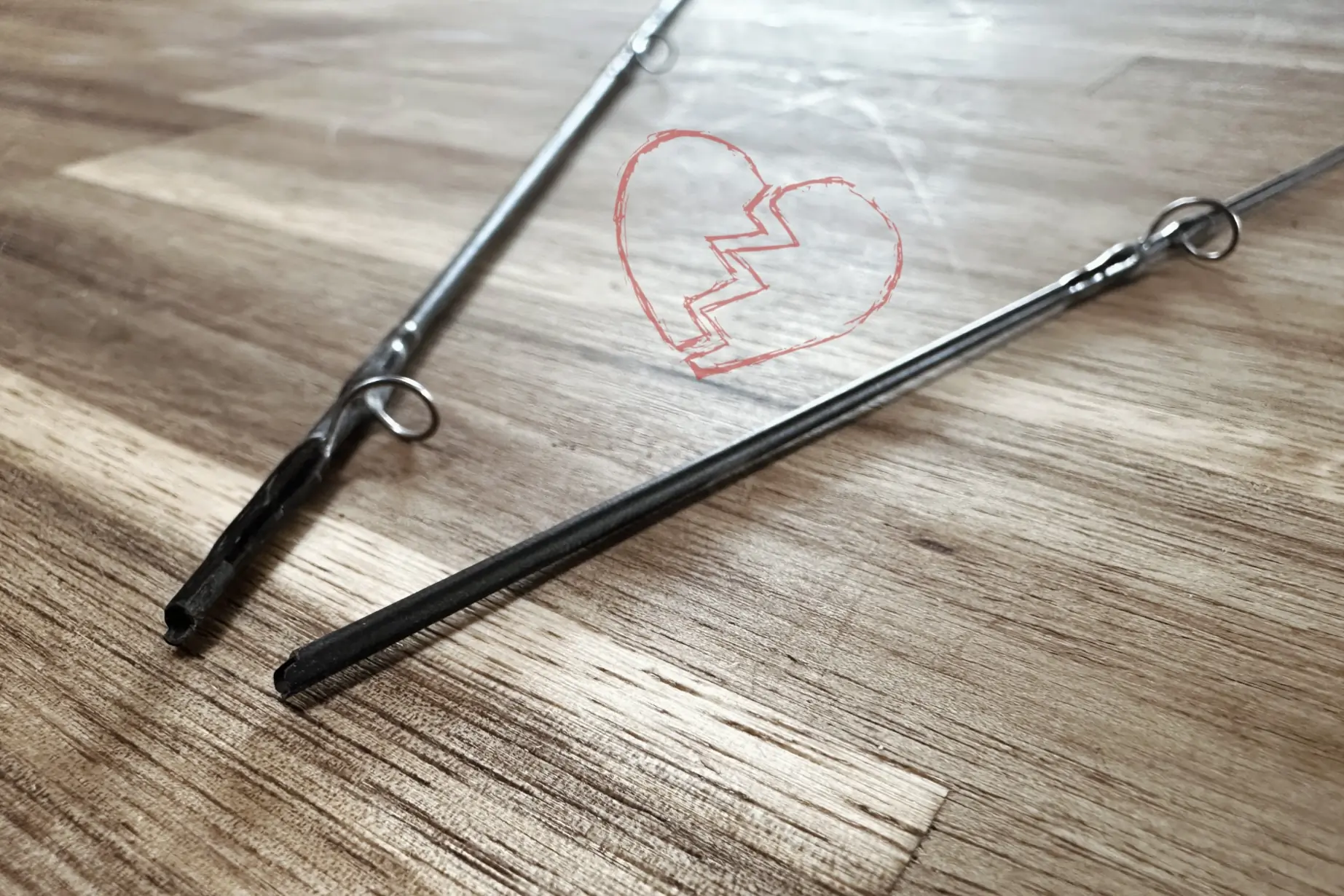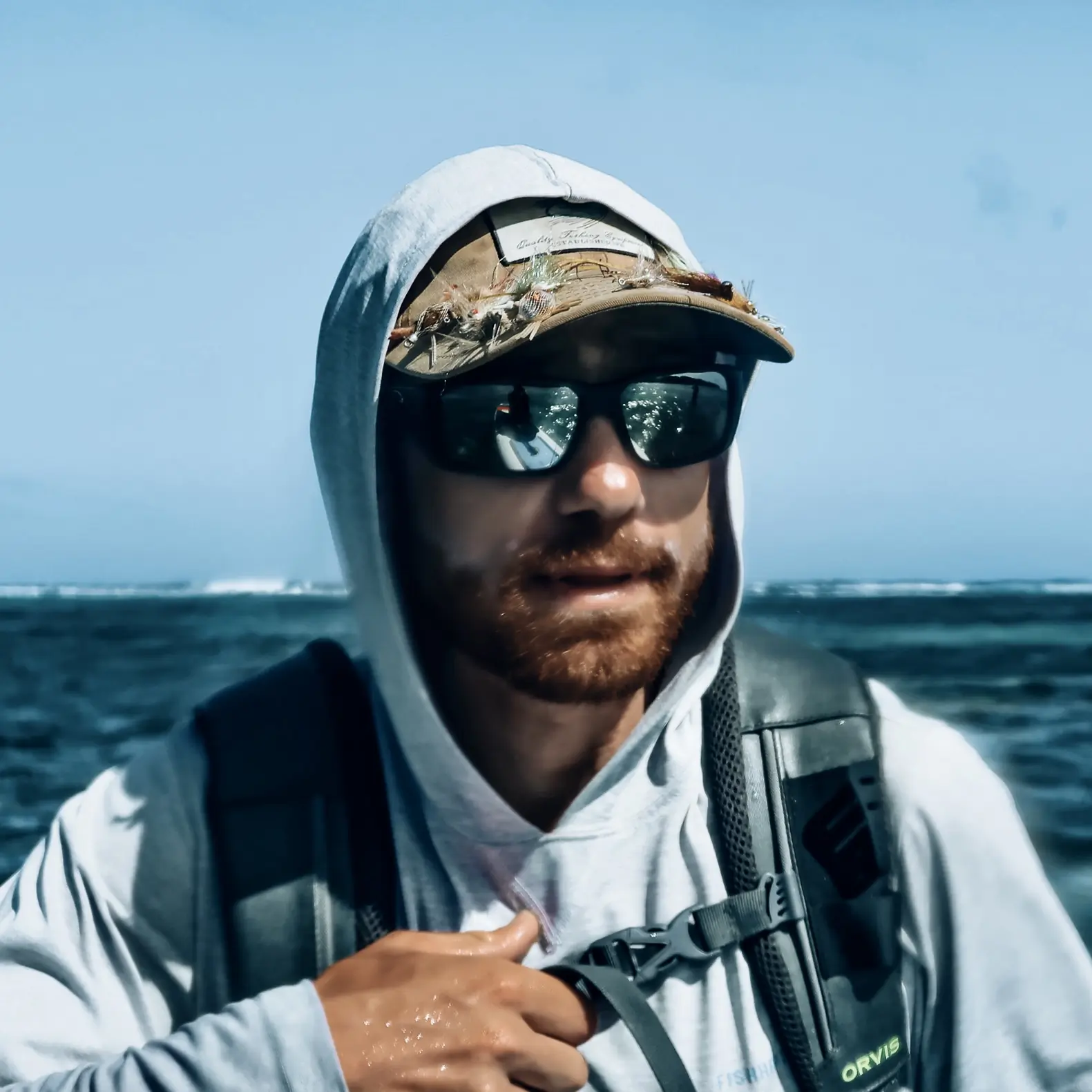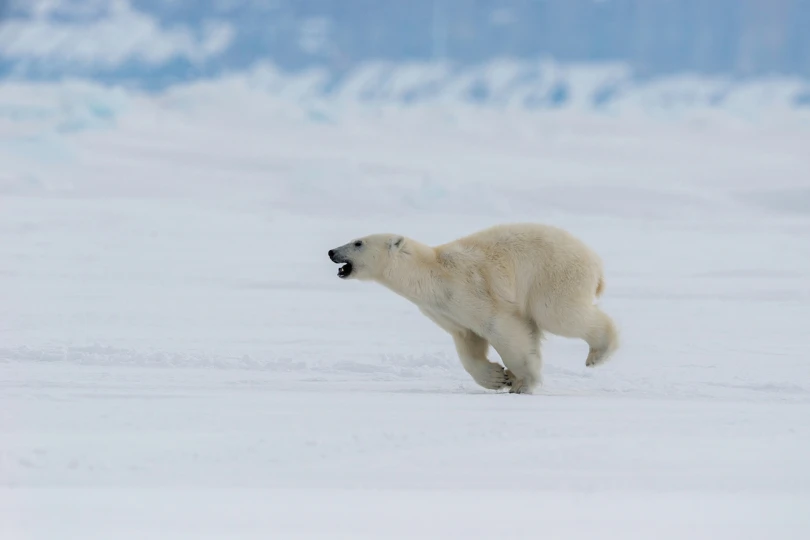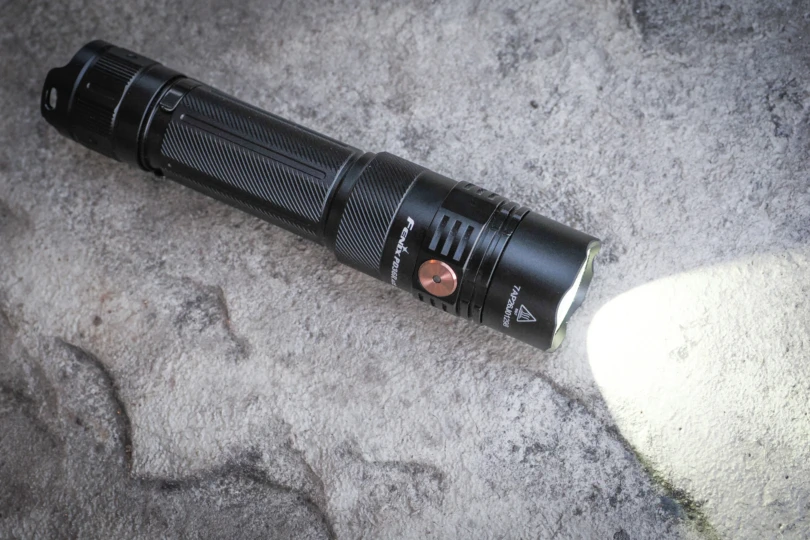While hiring a guide is a spectacular experience, the feeling of accomplishment when you do your homework, find the fish, get the shots, and ultimately put your hands on a tail is truly unparalleled. Not to mention, you can practically plan a multiweek trip on a shoestring for the cost of one guided day in some fisheries.
If you’re new to the world of adventure flats fishing, this gear list is for you. While every tropical fishery, of course, demands its own specific arsenal of equipment, there are some common denominators you ought to have on your radar.
DIY Fly Fishing the Tropics: A No-Nonsense Gear List for the Flats
The Main Details to Consider
Years of DIY trips in pursuit of bonefish, permit, and tarpon have taught me that there are a few main categories of gear you need to dial in for the best chance of success. In this gear list, I want to discuss and highlight the best rods and reels, flylines, apparel, sunglasses, stand-up paddle boards, and submersible packs for taking on the tropics.
I also want to share some miscellaneous gear and gadgets that have changed the game for my adventure angling endeavors. I’ll refrain from diving into fly selection because no two destinations are the same.
Once again, keep in mind that each fishery will require its own nitty-gritty packing list. More importantly than any piece of gear I can recommend, remember that the most crucial tool in your tropics toolbox is quality intel from proper research on your destination.
Fly Rods, Reels, and Lines
Rods

While there is a theoretically ideal rod selection for each fishery and species, in my opinion, the best fly rod for any given tropics trip is the one you feel most confident with. That being said, if you absolutely love your medium-action 7 weight, leave it behind. For most tropical scenarios, you’ll want a fast-action rod with a bit more backbone and range.
For targeting bonefish, permit, and tarpon, you will want an 8-, 9-, 10-, or perhaps 11-weight rod in hand. While high-performance rods from industry-leading brands are an absolute joy to cast and certainly advantageous, your trusty 9-weight that you’ve owned for years is likely just fine. If a top-tier rod isn’t in your budget, don’t let that stop you from planning a trip.
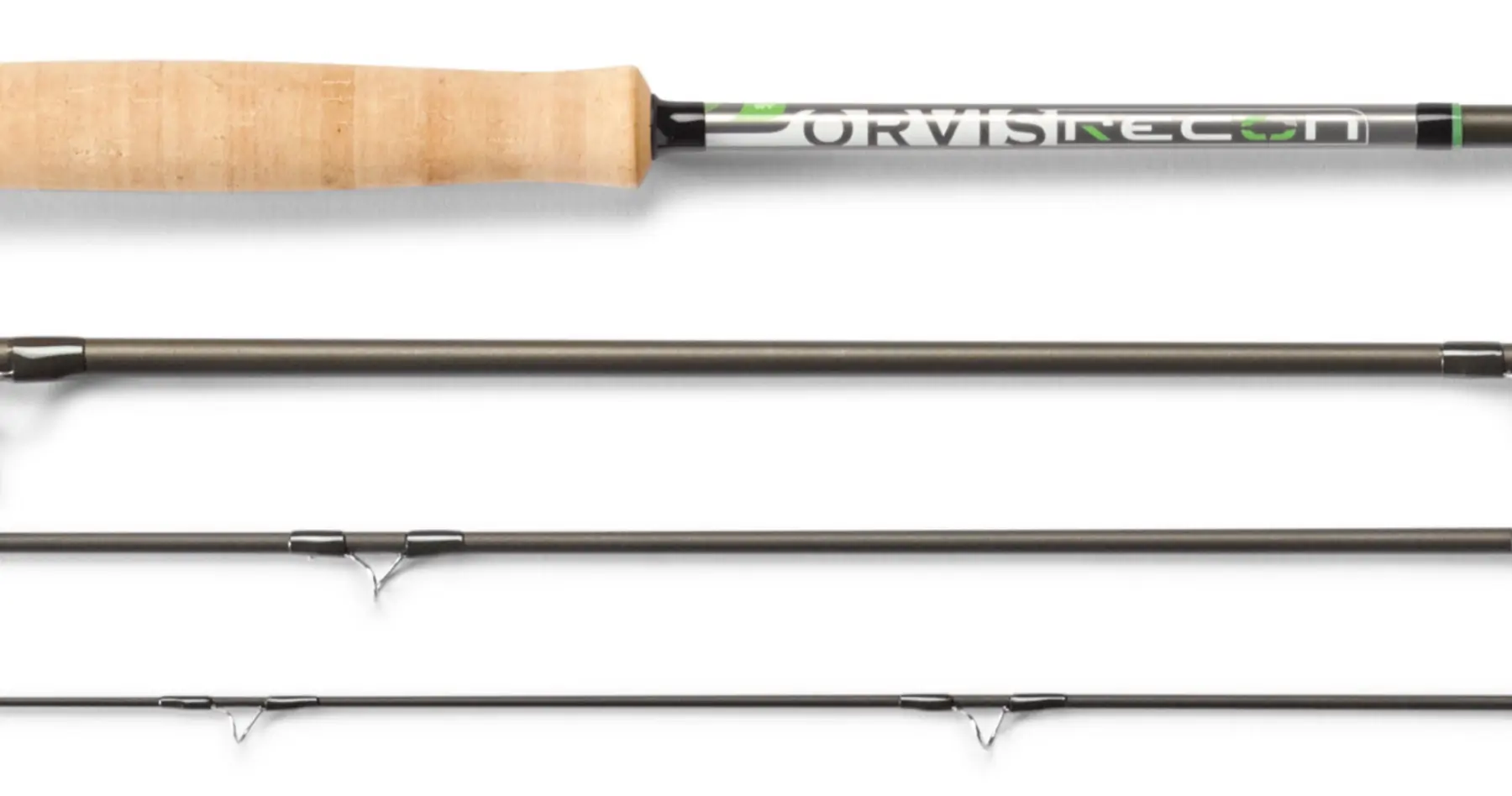
Remember that sight-fishing tactics mostly dominate tropical flats fisheries. Often, you only have a brief moment to pick up your line and make a shot at a spotted fish. While all of us fly fishermen daydream about seeing that tailing permit from 50 yards out and then stealthily approaching the fish for a downwind cast, the hard reality is that these shots are few and far between.
Many, if not most, of your opportunities, depending on the fishery/species/conditions, will quite literally swim past you in a matter of seconds. This demands a fast-action rod that you can quickly and efficiently pick up line, make minimal false casts, and accurately drop the fly with. Think windy conditions and farther than preferred casting distances. Choose a rod you can act fast and punch with so you don’t fall short.
Saltwater Rods to Consider
I certainly can’t say in confidence which rod is right for you. A few options within this realm that I’ve gleefully fished in the tropics are the Scott Sector, G.Loomis Asquith, Orvis Recon, Hardy Ultralite X, and my favorite, the Hardy Zane Pro.
Some more budget rod options if breaking the bank for a top-tier stick isn’t feasible include the trusty Orvis Clearwater, Redington Predator, and several of TFO’s saltwater rods.
If You’re Going Big, Go Big
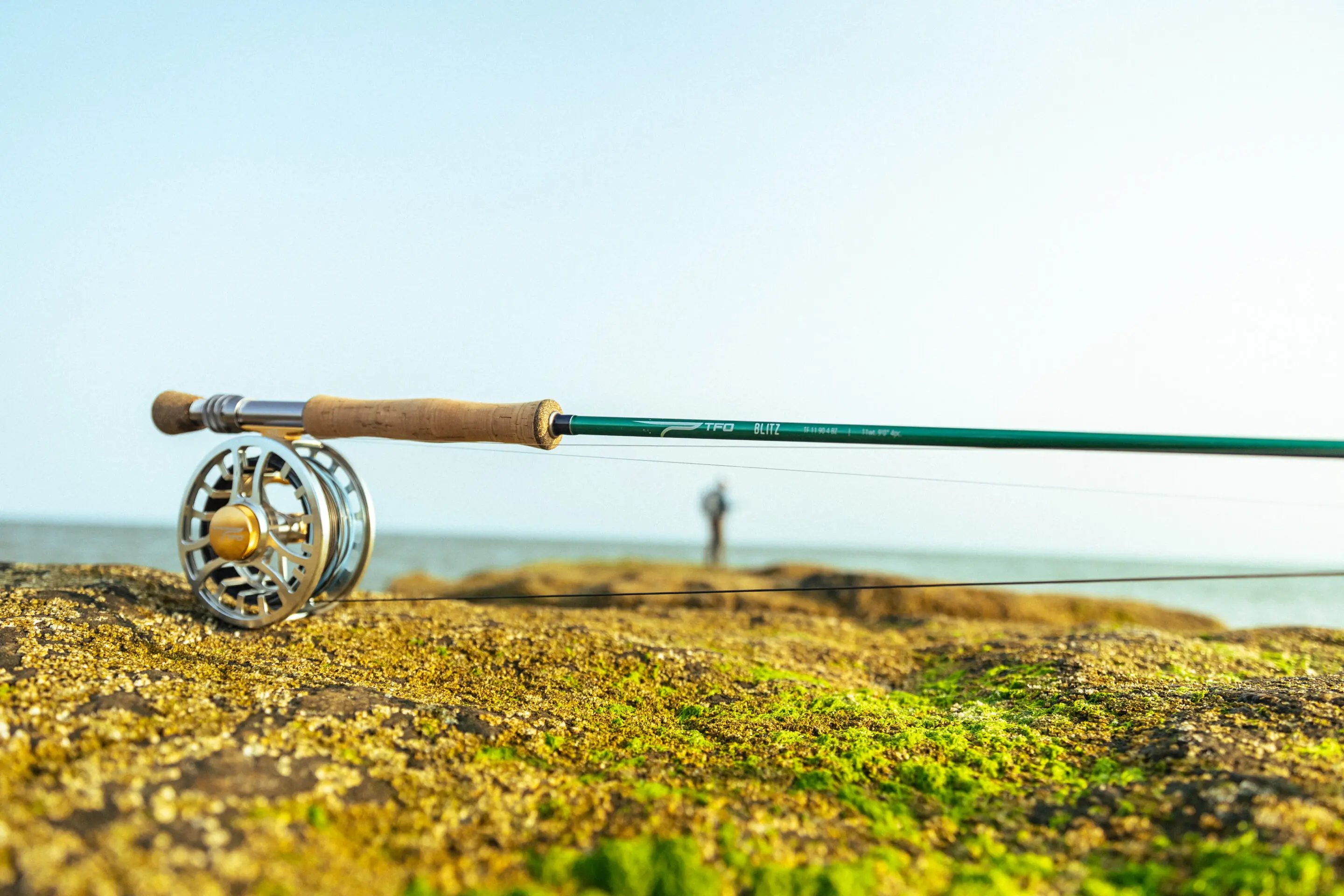



Anglers targeting larger caliber tarpon will also need to consider that you’ll likely be tossing some pretty heavy-duty streamers and trying to turn big fish. Bombing shots all day with a big wet sock of a tarpon fly and fighting potentially 100+ pound fish demands the right rod.
If medium to large tarpon is your target species, go with a 10 or 11 weight. My Orvis Recon and Hardy Zane Pro have performed wonderfully for me in this context, while the TFO Blitz and Sage Payload are solid budget options.




The fly rod rabbit hole (in virtually any context) is truly endless. At the end of the day, every serious angler has their personal preference. There are countless excellent rods I didn’t mention here that other anglers might insist are the best, so take notes.
More importantly, find what feels best to you. If I could only fish a single-weight fly rod in the tropics, it would be a 9-weight. A fast-action 9-weight is a blast to fight bonefish on and has adequate power for handling big permit and fairly large tarpon.
Targeting large jacks and bigger adult tarpon above the 50-pound class calls for a heavier setup. If you end up coming tight to one with your 9-weight, you still stand a chance. A 9-weight rod (and line) also retains a fairly delicate presentation with the right leader and casting technique compared to a 10-weight setup. You can avoid blowing up those schools of cruising bones and tailing permit.
Bonus Tip
A very important detail to consider while refining your tropical flats fishing gear list is to pack an extra rod.
I’ve had gear stolen and snapped rods in Airbnb ceiling fans, rental car doors, and while paddling through the mangroves, to name just a few tragedies. You can’t write this stuff, so come prepared with an extra stick or two.
Reels
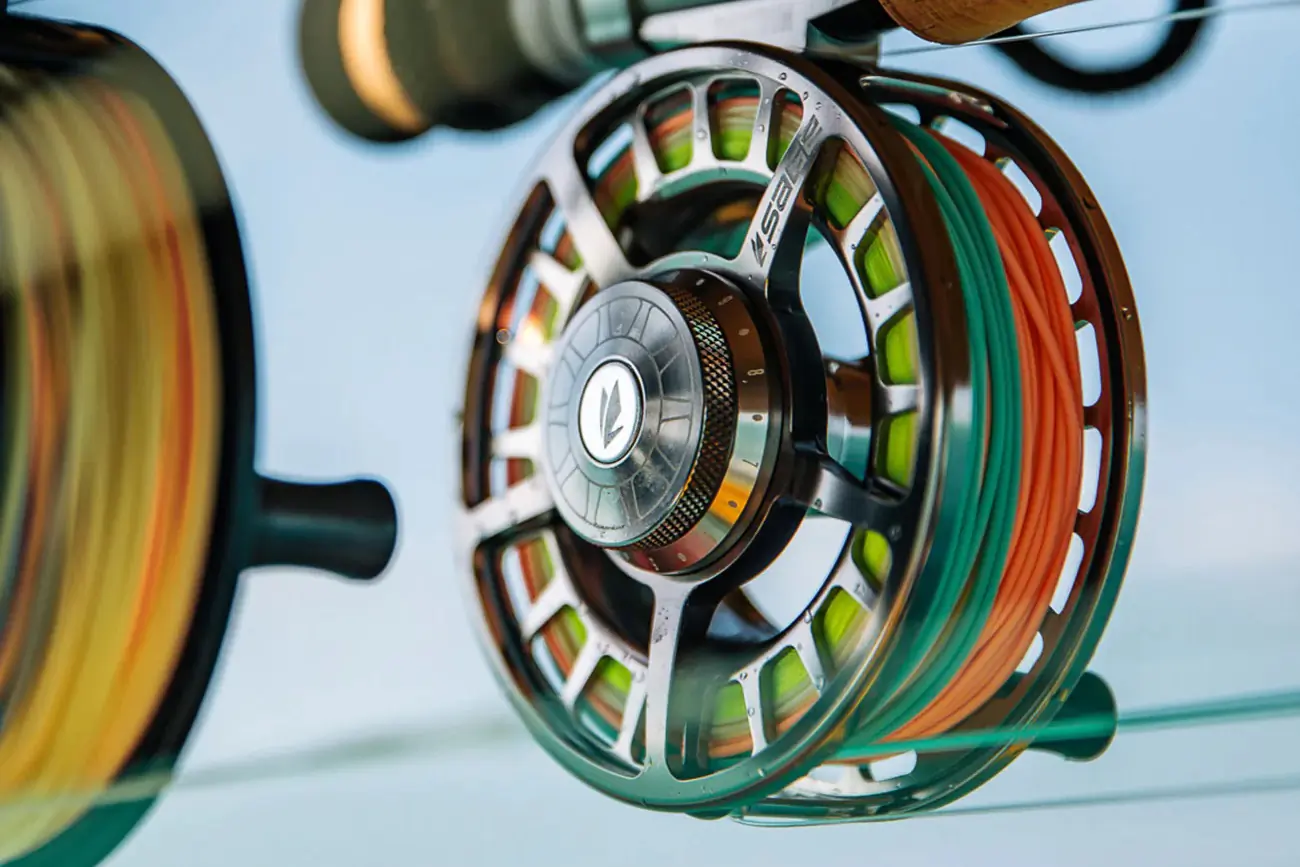



I am personally of the camp that your reel is less important than your fly rod and fly line. That being said, this is a very hotly contested topic. If you’re going to spend the money on a high-quality saltwater setup, I suggest allocating the majority of your funds to your dream rod and a top-quality fly line and then settling for an adequate reel. However, you can’t cut corners too dramatically when it comes to your hardware. We are talking about fishing the salt for powerful fish, after all.
A top-quality reel is a great investment that you’ll own for years with proper care. Be sure to really balance the pros and cons of a budget versus a high-performance option. Most serious saltwater anglers have a favorite brand or reel model. Talk to the fishermen you trust before pulling the trigger on a purchase. The most important aspects of your reel for the tropics are a sealed drag, large arbor, and bomber build.
Sealed Drag & Saltwater Precautions
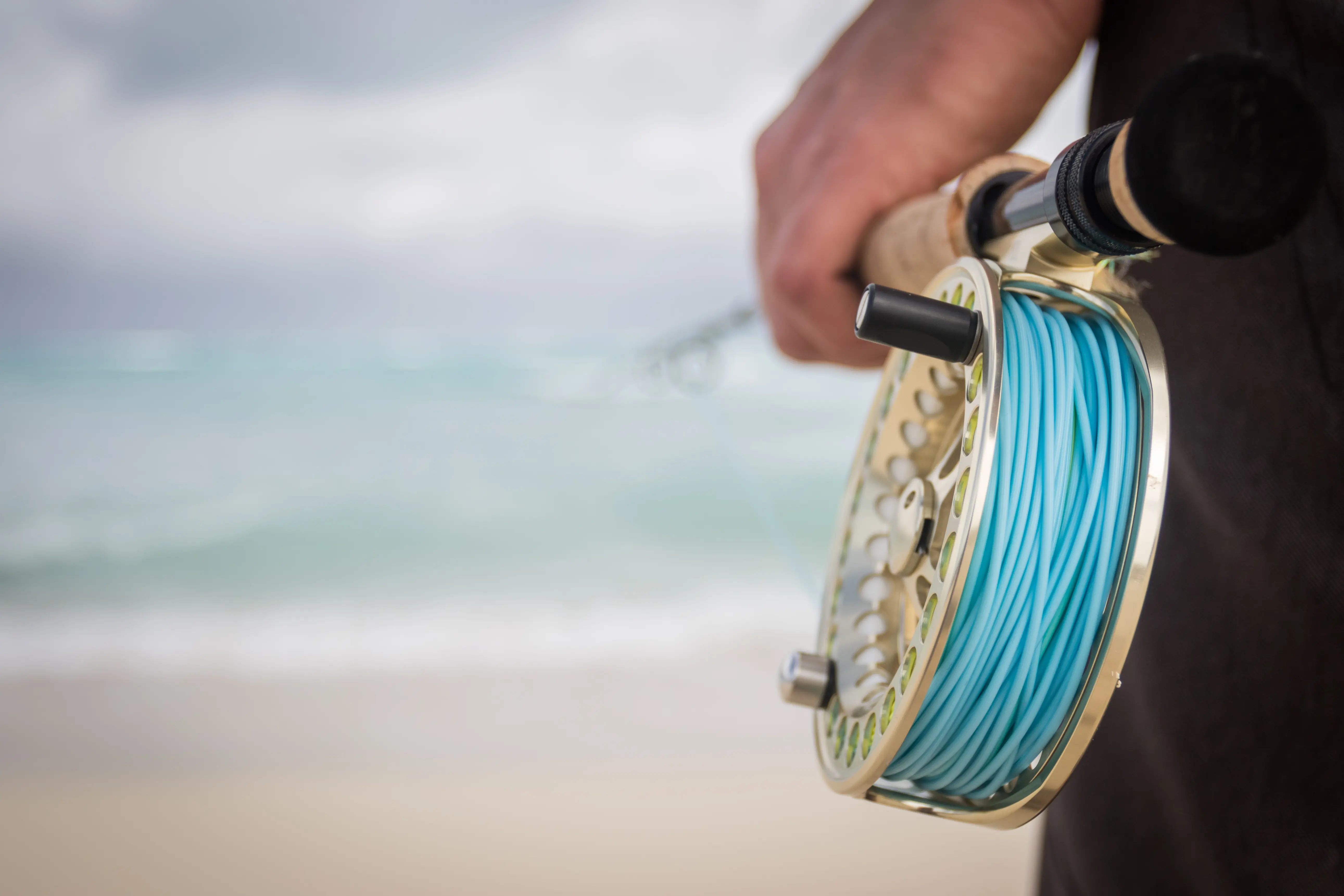



Any saltwater environment is hard on your gear, so a sealed drag is a must. No matter how fancy of a reel you’re fishing, always, always, always rinse it thoroughly after each day on the water. Properly disassembling, cleaning, and lubricating your reel after a big trip or before long-term storage is the best way to avoid buying a new one. Don’t forget to do your chores.
If you’re targeting particularly big permit, jacks, tarpon, or trevally, then you’ll want to invest in a reel with some serious stopping power. There’s nothing more devastating than watching your backing vaporize into oblivion because the fish you just hooked couldn’t care less about the 6 pounds of drag you’re fighting him on, so don’t bring a knife to a gunfight.
Big Ol’ Arbor
A deep and large arbor is wise for two reasons: backing capacity and line pickup. While you want to make sure your reel and rod are nicely balanced, I’ll personally always opt for a reel that’s on the larger end of what my rod can handle. Simply put, hooking a trophy fish on the flats is a huge accomplishment.
The last thing you want to have on your mind while you’re fighting the fish of a lifetime is, “Do I have enough backing?!”
In the same vein, when that coffee table permit or cruise missile bonefish turns around and steams straight back at you, you’re going to want to be able to very quickly pick your line back up onto the reel and retain tension to that fish.
High integrity and reliable functionality are other reel characteristics that are crucial for fishing the salt — and even more crucial when it comes to depending on your gear far from home. I have utilized high-performance fly reels in the tropics that have betrayed me on the flats and been forever retired.
Buying a high-end, expensive reel option is not necessarily the key here. Super-tight tolerances between your spool and main reel body, as well as quality materials and craftsmanship, are what you ought to be looking for. Don’t overthink it.
I personally would rather cast with a slightly heavier reel option that is built more solidly and dependably than some of the ultralight options with inherently more fragile components. Remember, you’ll be mostly sight fishing rather than blind casting all day. A slightly heavier setup won’t blow your shoulder out and very well might balance your rod nicely.
So … What Reels Should You Consider?
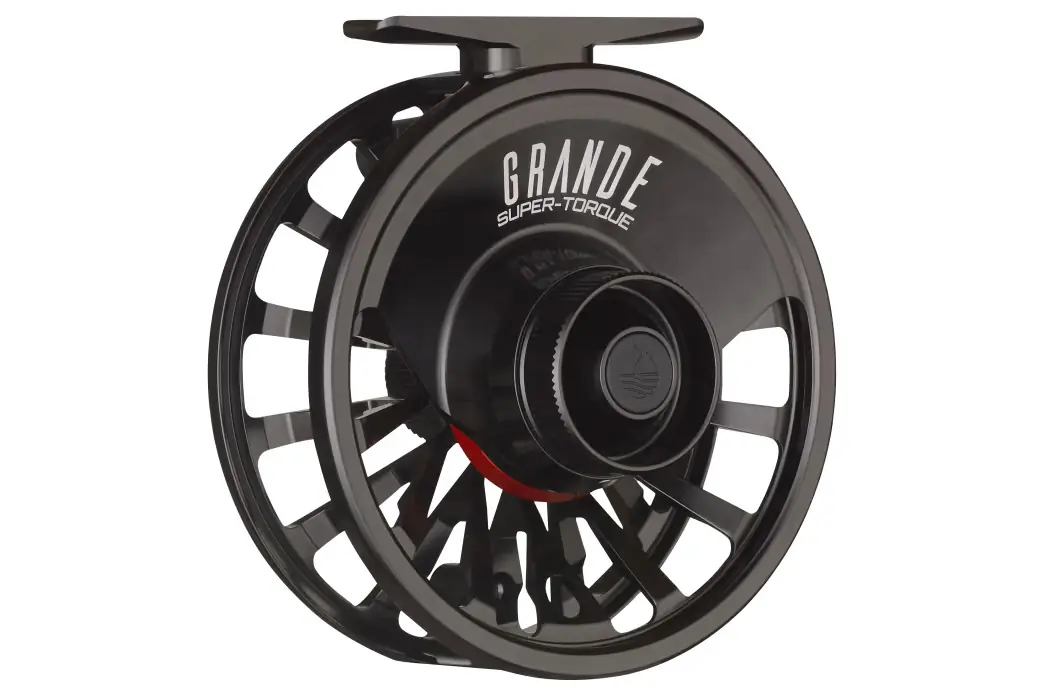



A few of my favorite options for saltwater reels suited for tropical flats applications that won’t break the bank include the Sage Spectrum, Redington Grande, and various Lamson models. Some higher-end brands for saltwater applications worth doing your research on include Nautilus and Tibor. Tibor reels are pretty neat because you can purchase parts and complete a lot of maintenance and repairs on your own — a handy feature for trips far from home.
Fly Lines
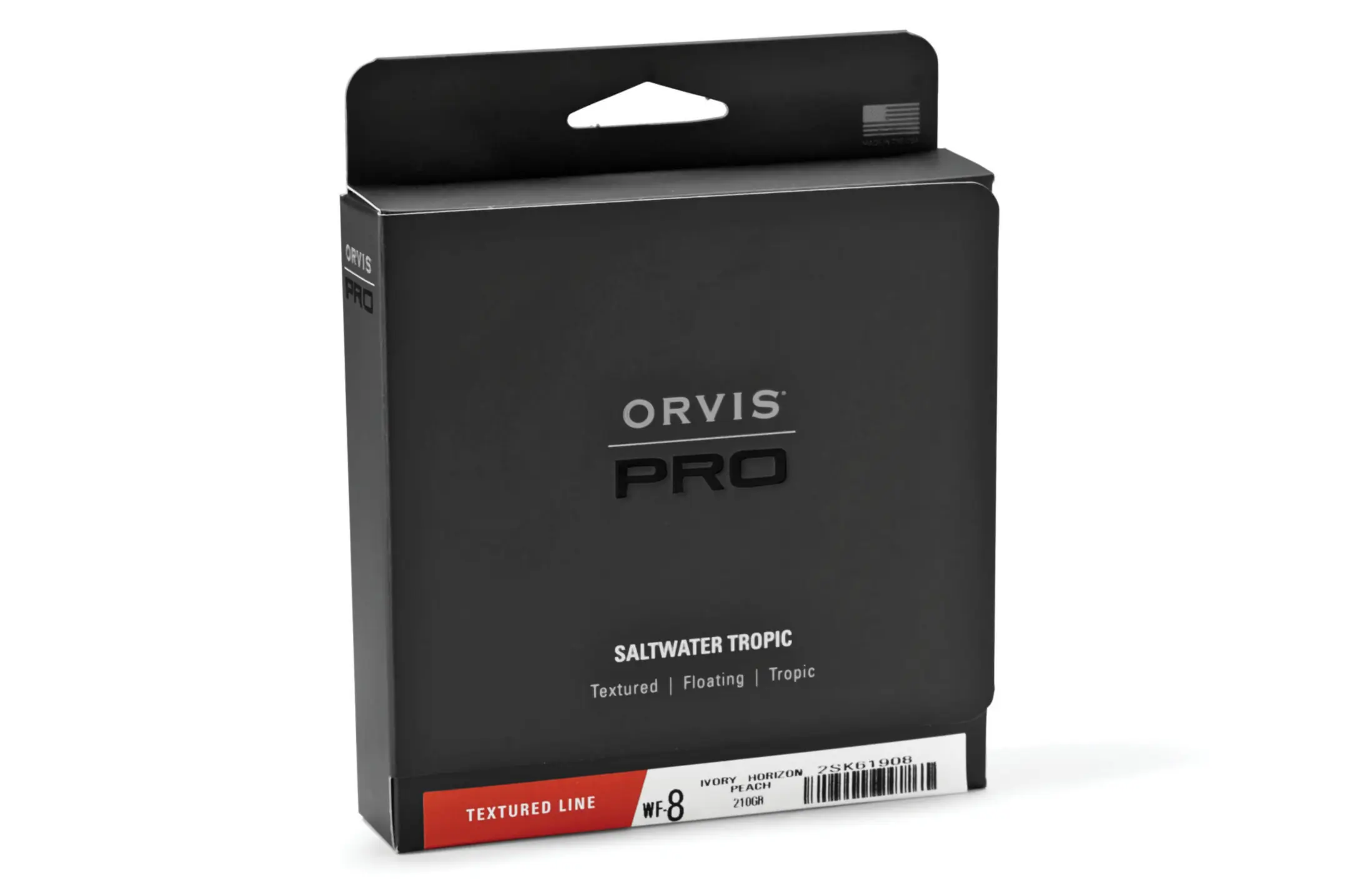



Your fly lines are another crucial aspect of your setup. I personally am a big believer in splurging for an excellent quality fly line, and if you’ve ever cast one, you’re likely of the same camp. In step with my suggested rod action, your ideal fly line for tropical flats fishing should be well-suited for making quick and accurate shots in challenging conditions.
A tropical core is also crucial to avoid a wilty fly line in warm water conditions, so don’t expect your coldwater striper line to perform well no matter how much you love it. If you’re planning on targeting tarpon, large jacks, and other species that may call for some big flies, then be sure to go with a fly line that’s engineered with turning over cumbersome streamers in mind.
In general, you’ll want a floating fly line that loads nicely with minimal false casts, effectively punches through wind, and ideally also offers a reasonably delicate presentation. An especially shooty head and soft presentation don’t exactly go hand in hand, so my advice is to go with a fairly aggressive line and then practice opening up your loop and dropping the fly in the zone gently.
Spooky bonefish and permit in calm conditions are not forgiving fish, so practice deliberately and delicately delivering your favorite go-to patterns before you board that flight.
Examples of Salt Fly Lines That Won’t Let You Down
I’m personally a big fan of both Orvis’s and Scientific Angler’s saltwater tropical fly lines. If you’re seeking a more budget option, Airflo has some stellar tropical fly lines — the Bruce Chard Tropical Punch is a wonderful value choice that won’t disappoint.
Rio has also recently reengineered its fly lines, and the Tropical Series Flats Pro Line is a killer versatile choice. Just like with your rod quiver, do yourself a favor and pack an extra fly line or two. I’ve had fly line coatings become nicked to the point of no return on coral heads and other structures more than a few times.
Backing
When it comes to your backing, I strongly suggest spooling up with narrower diameter gelspun or hollowcore rather than dacron — simply from a capacity standpoint. As we discussed, capacity is crucial if you’re lucky enough to sink into a trophy fish, so go ahead and bite the bullet on the higher cost of superior backing if it gives you an extra 50 or 100 yards. As someone who targets permit, bonefish, and juvenile tarpon, my go-to strength for my backing in the tropics is 30-pound.
Apparel




Your flats fishing wardrobe is worth investing in. Countless hours of walking and wet wading in pursuit of fish is taxing on the body, so make yourself as comfortable as possible. Protection from the harmful effects of the sun is honestly even more important than comfort because nothing takes the pep from your step like a nasty sunburn.
In terms of color selection, I recommend avoiding vibrant, loud colors and sticking to soft whites, blues, greens, and grays so you don’t stand out against the environment. Here are my top suggestions for hitting all the major bases.
Footwear
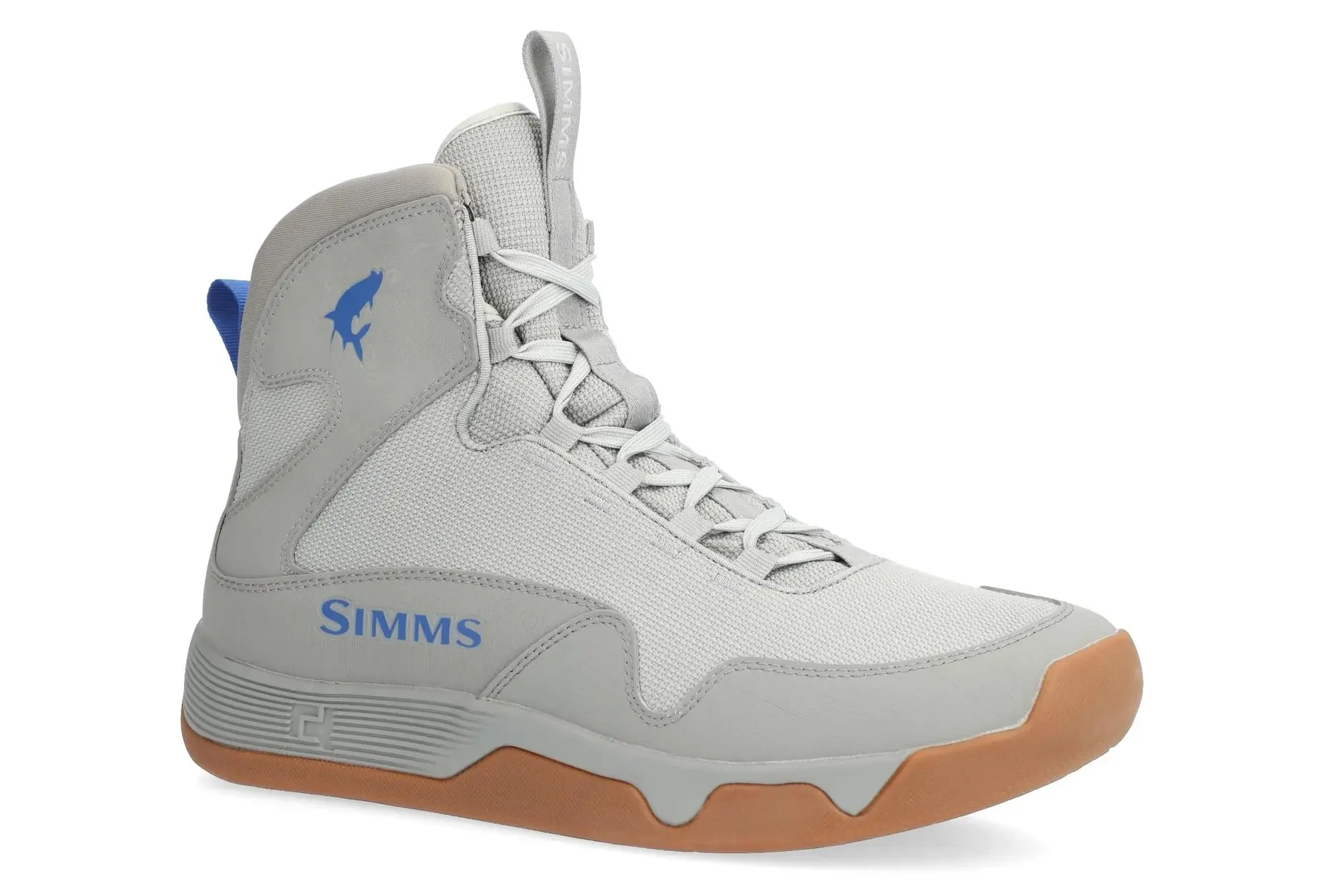



Lots of miles over varied terrain means your wading boots are arguably the most important piece of apparel you’ll pack. It’s important to find a pair that you love.
The traits I look for in my wading footwear are support, durability, and debris exclusion. I prefer to wear a thin wool sock or Simm’s Guide Wet Wading Socks and a wading shoe that matches my actual shoe size. However, many anglers opt for a thin neoprene sock and size up their footwear a bit — it’s all preference.
The Orvis PRO Approach Shoes have been my go-to wet-wading option for a few trips. They’re holding up great despite my best efforts to destroy them. The lightweight, seamless PU cage construction allows water to drain effectively.
The integrated, breathable Ariaprene sock denies debris from entering. I rarely have to pop them off to dump out sand, shells, and schmuck, and they’re a breeze to take off and on quickly.
A removable 3D-molded OrthoLite insole and midsole go on to ensure all-day comfort. And their wildly low weight is quite easy on the legs (23 ounces). Orvis recommends pairing the PRO Approach Shoes with their 0.5mm Neoprene Wading Sock, but it’s your call.
The Simms Flats Sneakers are a slightly more robust option that I’ve also worn with great success. Although heavier than more streamlined options (46 ounces), these boots offer better-than-average ankle support and underfoot integrity. A gum rubber outsole for solid traction when wet and the brand’s Removable Right Angle footbed for enhanced comfort work together to ensure that your feet stay happy all day.
Wet Wading Shirts and Pants
Long days wading under full sun exposure are no joke. Even overcast conditions at tropical latitudes have a sky-high UV index. I strongly suggest long-sleeved casting shirts and wading pants rather than shorts.
Minimizing your sunscreen use while fishing in the vicinity of coral reef environments is, furthermore, a mindful ethical practice. Like most of the gear categories here, the best shirts and pants are the ones you feel most comfortable in. But here are a few of my favorites.
Shirts
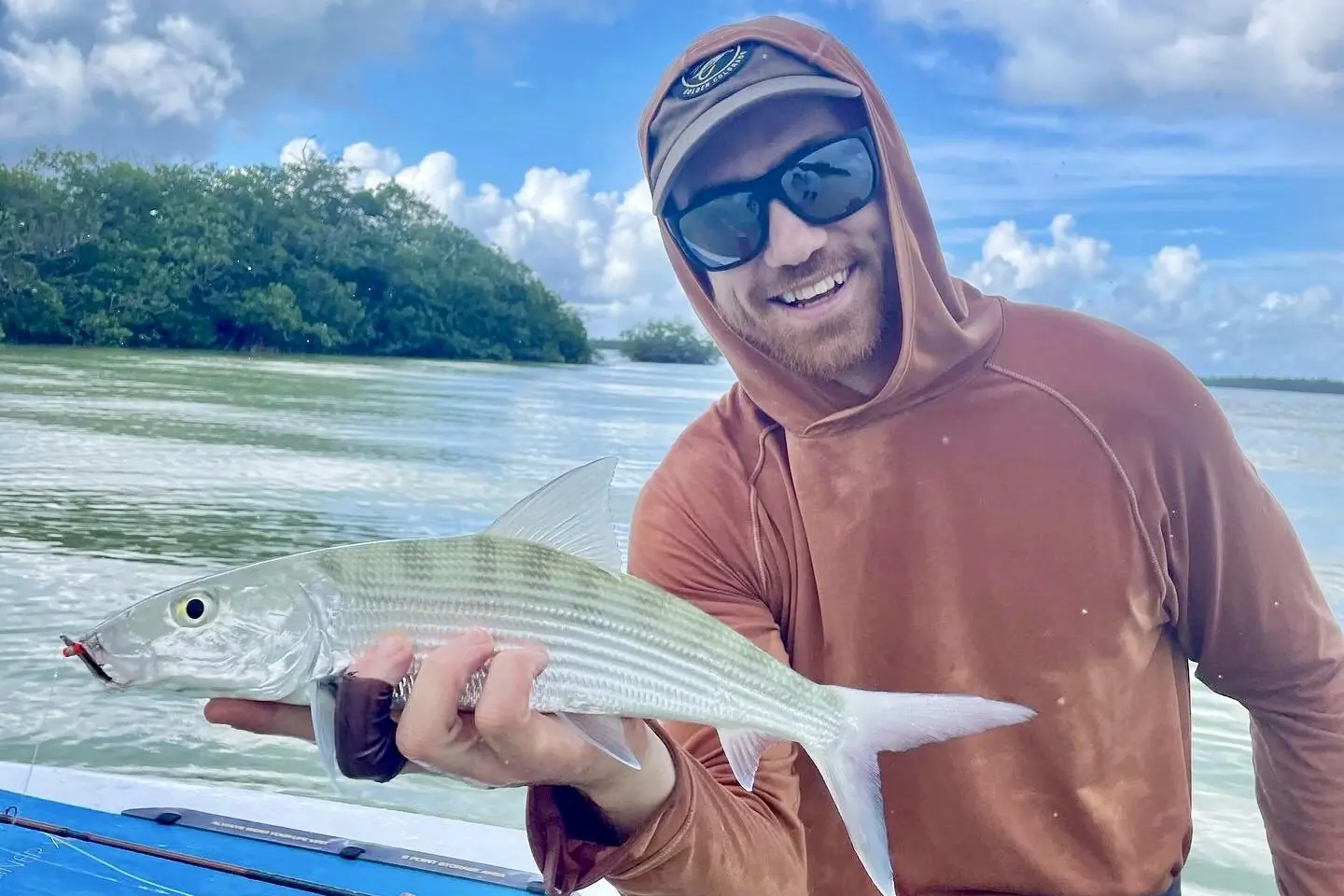



Free Fly’s Elevate Hoodie is my go-to sun shirt for wet-wading the flats. The TENCEL blend and Drirelease tech work together to create an exceedingly soft and quick-drying garment sporting UPF 30+ sun protection. Free Fly has also incorporated HeiQ Fresh odor control, which is a brilliant feature for extended fishing trips where laundry days are long and few between.
The Crossover hood provides better-than-average neck protection compared to standard hoods, while sun cuffs protect the back of your hands. Best of all, this is a pretty sharp-looking shirt that you’ll wear straight to happy hour from the flats. Available in both men’s and women’s sizing.
A few other sun shirts I’ve come to love include the Orvis DriCast Hoodie (boasting UPF 50+ sun protection), Sitka’s new Radiant Hoody (UPF 20), and the Heather Streak Boden Hoodie from Fish Hippie (UPF 30), but there are tons of other great choices.
Pants
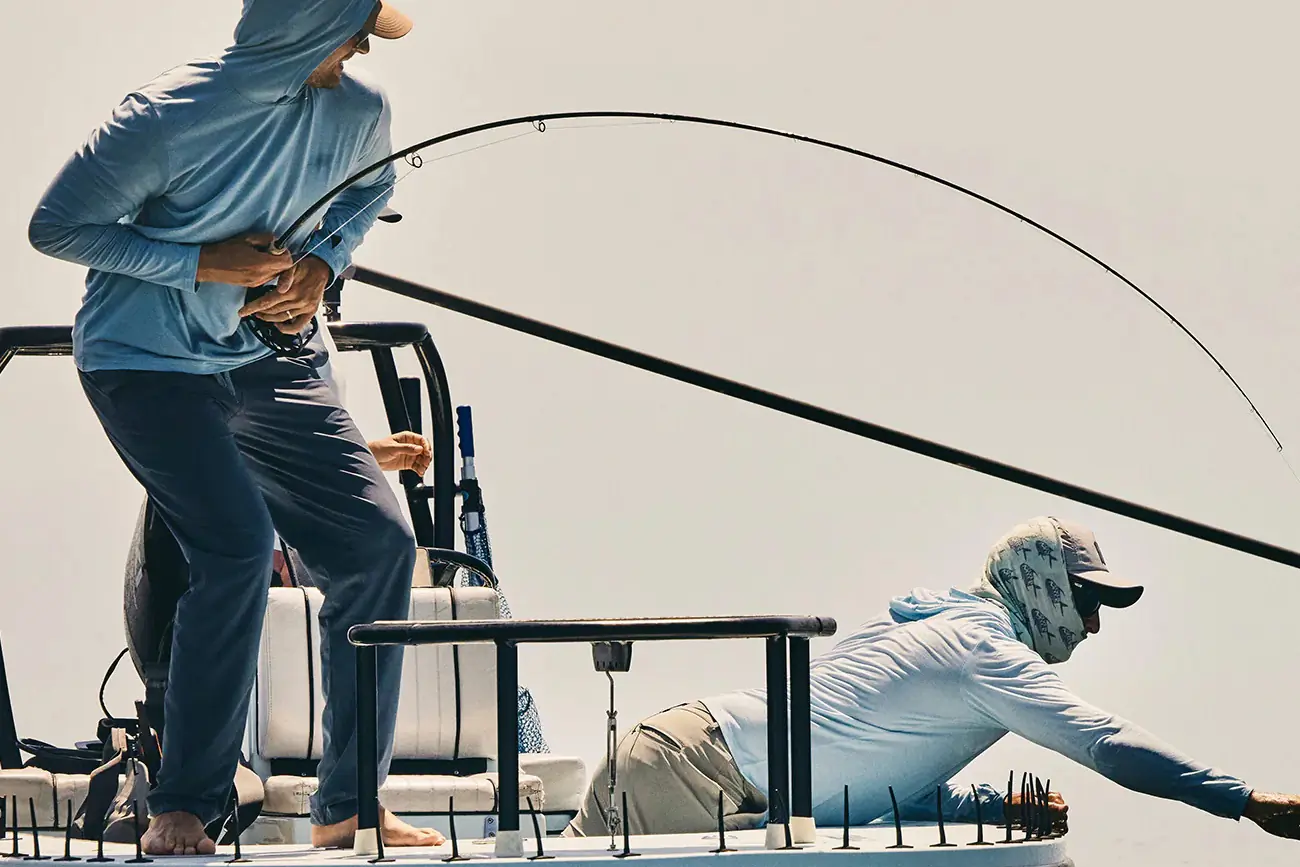



When it comes to wading pants, my personal favorite is another Free Fly garment, the Breeze Pant. I’ve field-tested quite a few pants for wet-wading applications in the tropics. These bad boys are by far my favorite. A cool aesthetic both on and off the water and a super stretchy, lightweight, and comfortable fit have made these pants my go-to by leaps and bounds.
Offering UPF 50+ sun protection, you’ll never have to worry about burning your bottom half. And trust me when I say you’ll remain nice and cool in the tropical heat.
Best of all, an elastic waistband and drawcord keep these pants properly snug without any potential line snags, so you’ll feel truly lethal in these. On-seam hand pockets and a secure back zippered pocket are also nice features not to be overlooked.
Sunglasses
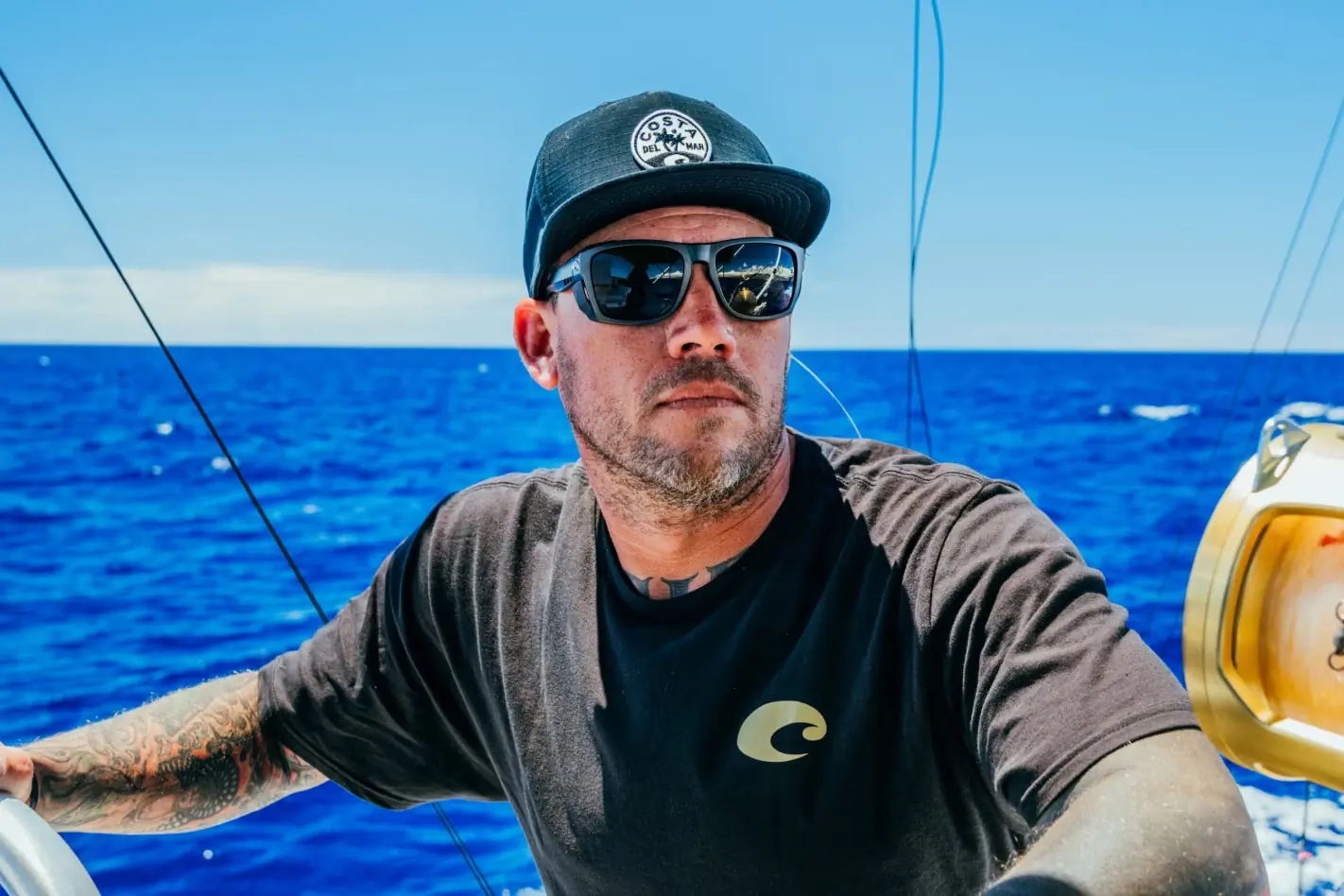



Your sunglasses are quite possibly the single most important tool for success on the flats. More so than any other angling context, flats fishing demands your eyes to be keyed in.
This may seem obvious, but the number of shots you get at any given species is directly correlated to how many fish you can actually spot — so invest in quality eyewear and boost your odds. Better yet, bring along a few pairs of shades if your budget allows. Good sunglasses are a solid investment across many fisheries (and hobbies), so it’s not as if you’ll only wear them on the flats.
I personally bring four or five pairs of shades with me to the tropics and decide which to wear on a day-by-day, flat-by-flat basis. This may be a bit overkill, but owning two different lenses for low-light days as well as for full sun is highly recommended.
Frames
When it comes to your frames, I suggest an 8-base curve for maximum coverage and light leak reduction. Simply put, go with a pair that offers a full or close to full wrap around your face and leaves minimal peripheral opening for backside light to enter your view.
If you wear prescription glasses, then do yourself a favor and purchase custom prescription lenses for your fishing endeavors. It’s worth it. There are countless high-quality brands on the market at this point, so be sure to shop around.
Lenses
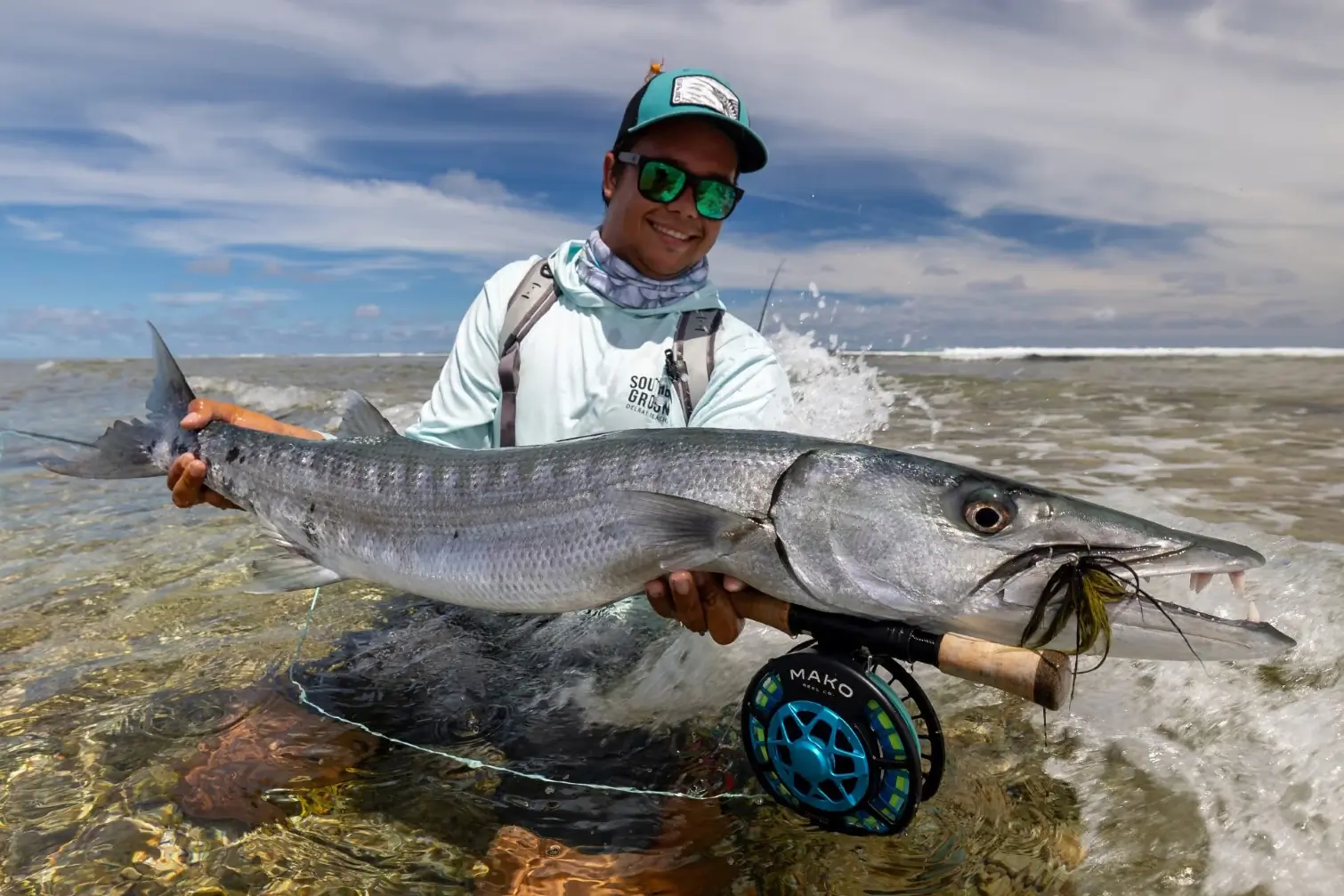



Green mirrored lenses are my go-to for most of the tropical flats environments I fish. They’re stellar for combatting eye fatigue on especially bright days, and are purpose-built for inshore fishing. I love Costa’s green mirrored lens, as well as Bajíos — you can’t go wrong with either.
If you’re in the market for a new pair of shades, be sure to consider the new King Tide frames from Costa, they feature removable side shields for blocking backside light and ventilate wonderfully.
For overcast days, you’ll be more or less dead in the water when it comes to spotting fish without a pair of low lights. If the forecast calls for even intermittent cloud cover, I typically find myself wearing my sunrise silver mirror lenses by Costa.
All it takes is one passing cloud to ruin your view of that cruising permit, so give yourself the best chance of keeping eyes on the fish you worked so hard to spot. Bajío’s rose-mirrored and violet-mirrored lenses, as well as Smith’s Chromapop low light lenses, are absolutely worth checking out for low light conditions as well, so be sure to familiarize yourself with a few different lenses before making a choice.
Stand Up Paddleboards




Utilizing a SUP for flats fishing applications is a game changer. There are countless ways to implement a SUP, both solo and with a partner, so consider whether the fishery you’re thinking of traveling to might be a good candidate for paddleboard use. Many inflatable SUPs are suitable for airline travel, so you can BYOB (bring your own boat) virtually anywhere!
When I fish with a friend in the tropics, we take turns standing on the bow of our SUP while the other angler either pushes or pulls the board depending on wind direction. With an extendable paddle, the angler who isn’t standing and actively fishing can also straddle the stern and pole the SUP like you would a poling skiff.
Stepping up onto a platform from knee-high water exponentially increases your chances of spotting fish, and with a little practice, you’ll dial in your line management and balance up there.
Serious Stealth




I firmly believe that utilizing a SUP can sometimes be even more advantageous than standing on the bow of a panga due to a more stealthy presence on the flats and less noisy bow-slapping. Also, if nothing else, SUPs work wonderfully for transporting you and your gear to otherwise inaccessible fishable water.
If you’re like me, then you’ve considered swimming across deep channels to get your feet on less pressured, tasty-looking sections of habitat; with a SUP, the flats are yours to explore in full.
I recommend at least an 11-foot-long SUP if you plan on fishing with a friend. Most boards in this size class feature a 300-350-pound weight capacity. Doubling up can be a bit dicey, but trust me, it’s doable.
Ideally, one angler fishes from the bow while one angler sits and poles or remains in the water and pushes/pulls. You shouldn’t really both be standing, anyway. Choose a SUP with minimal “clutter” on deck in order to minimize line snags, or simply modify or remove bungee tie downs, handles, etc., so the bow is clear. Most importantly, for SUP selection, be sure the travel bag is of a reasonable size and weight for airline travel.
Boards Worth Considering
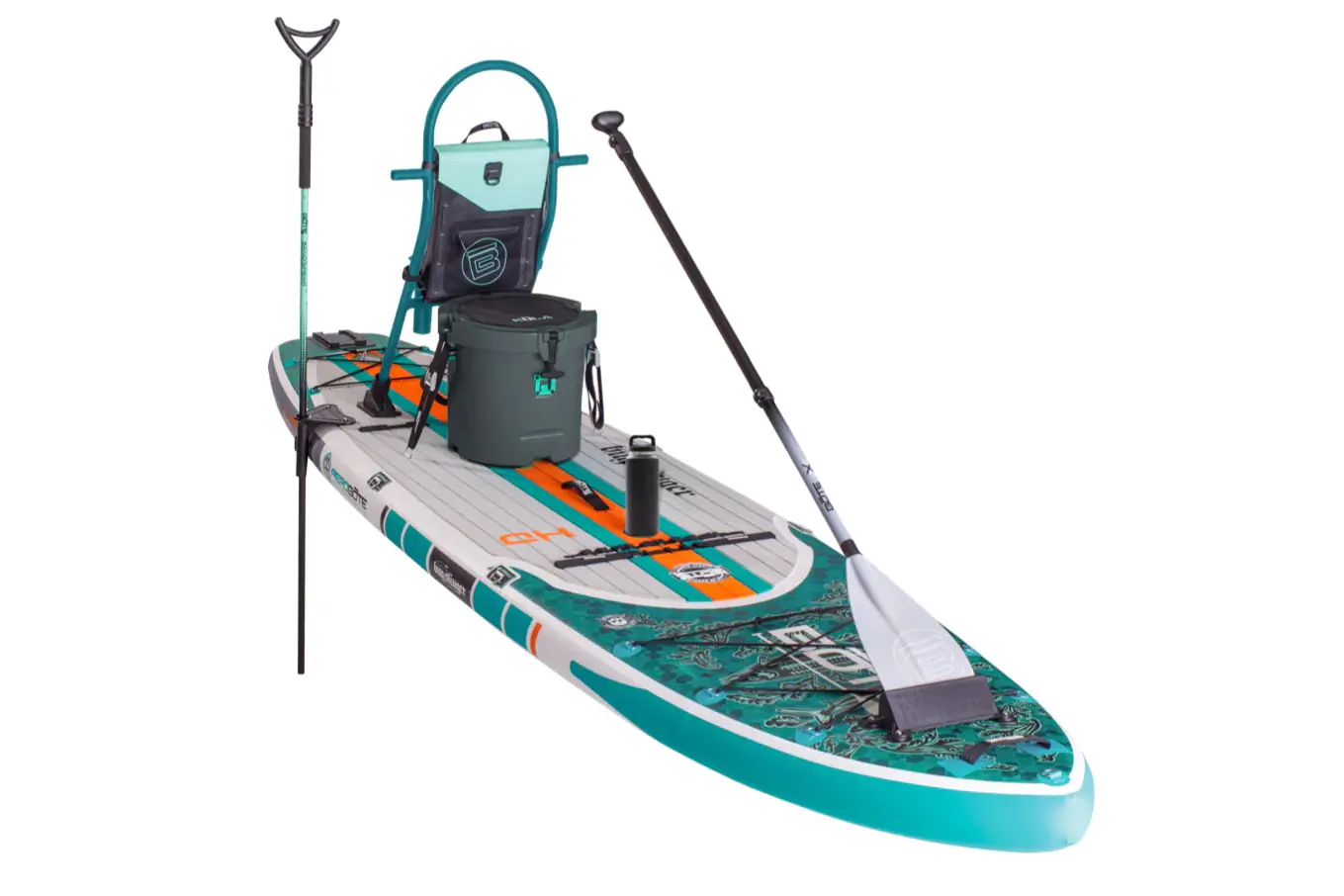



The HD Aero 11′6″ Bug Slinger from BOTE is a great option for adventure anglers sporting high integrity, a feature-rich design, and a very packable build. It comes in at just 36 by 17 by 13 inches and 48 pounds when packed into the included carry bag.
You won’t even have to check this flats-chariot as oversize! I personally prefer to keep my SUP as minimalist as possible, but if you choose to, you can outfit the Bug Slinger with a host of practical BOTE accessories, including the tackle rack, paddle sheath, and more.
The Megalodon 2.0 from ISLE is another option worth checking out that’s more suitable for heavier anglers and for fishing tandem with a buddy. Available in 12- and 15-foot lengths, both models are impressively portable, weighing in at 36 and 50 pounds, respectively. This model is one of the brand’s “ultrastable” SUPs, so those new to the balancing act of sight fishing from a paddle board might find a friend here.
It’s worth noting you shouldn’t overlook purchasing a budget inflatable SUP if the cost of a high-performance option is daunting. There are countless high-reviewed models on Amazon and elsewhere that might well suit your flats fishing endeavors. Just do your research.
Submersible Packs
Whether you’re on your two feet or utilizing a SUP on the flats, you’re going to need some dry storage for your gear. Camera equipment, fly boxes, extra sunnies, and most importantly, lunch, demand a waterproof pack.
I like to utilize a submersible hip pack for days I don’t require an extensive gear load and a backpack for the all-day full sends. When making your selection, be sure the pack you’re considering is minimalist in design to avoid line snags. And you need something that is easy to quickly get in and out of to find what you need.
Going Tight and LowPro
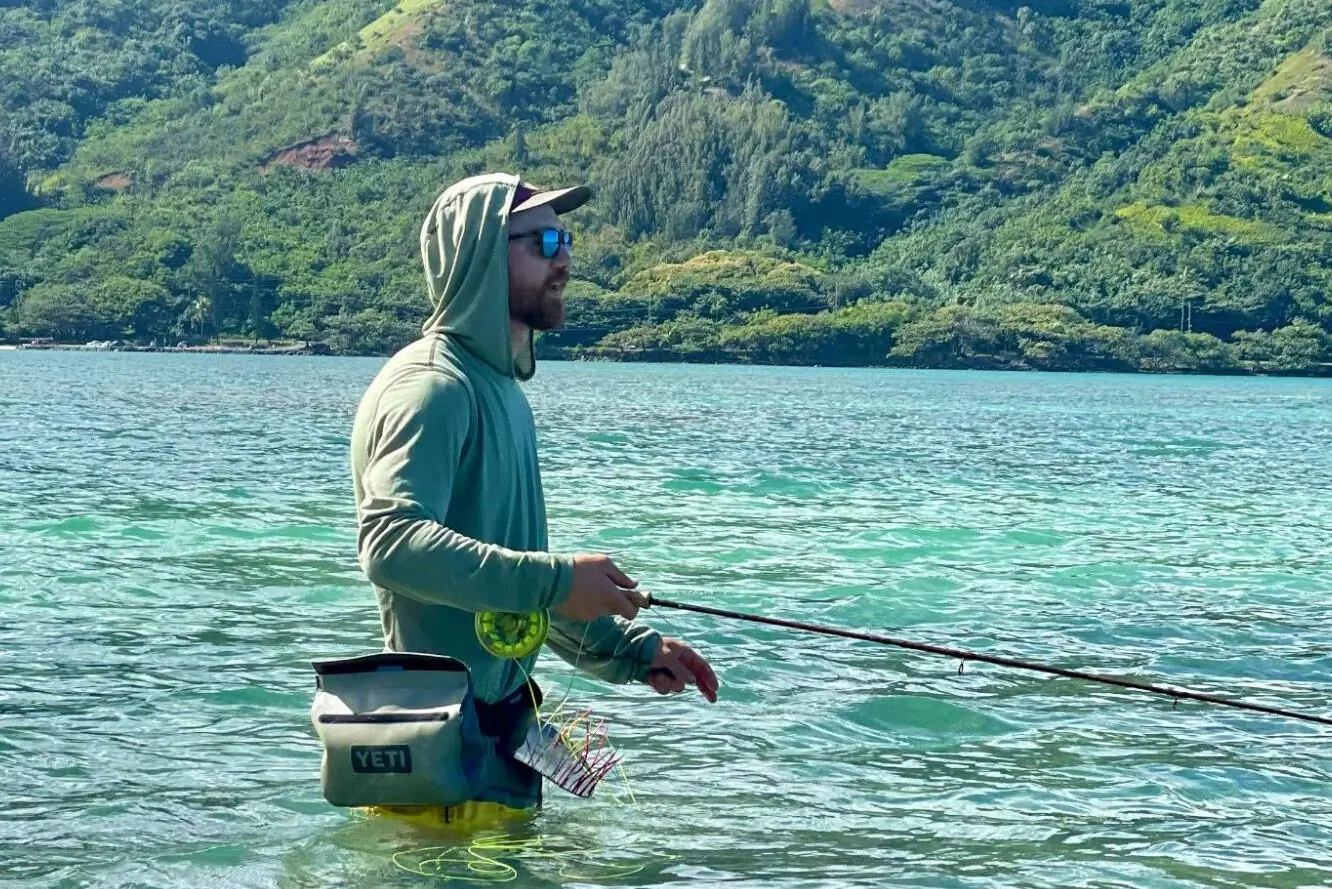



My trusty hip pack for the flats is the YETI Sidekick Dry 3L Gear Case. This handy submersible pack is super streamlined, wearing more low profile than anything else I’ve field tested. I simply run an Arcade Atlas Stretch Belt through the belt loops and can quickly and seamlessly rotate the pack to my front to switch flies or build a leader, and then slide it back behind me once I’m sorted out.
You can also attach this pack to a backpack, further boosting your storage and organization potential. Best of all, the HydroShield Magnetic Closure can be popped open with one hand.
This makes reaching for your phone to snap a pic when your buddy comes tight or fumbling around for your fly box a breeze. There’s not a ton of capacity here at just 3 L, so you’ll only really be able to pack a fly box, phone, and a few spools of leader material in there.
The Patagonia Guidewater 9L Hip Pack is another low-profile option I’ve enjoyed fishing with that offers a significantly higher gear capacity.
When You Need More Space: Fishing Backpacks
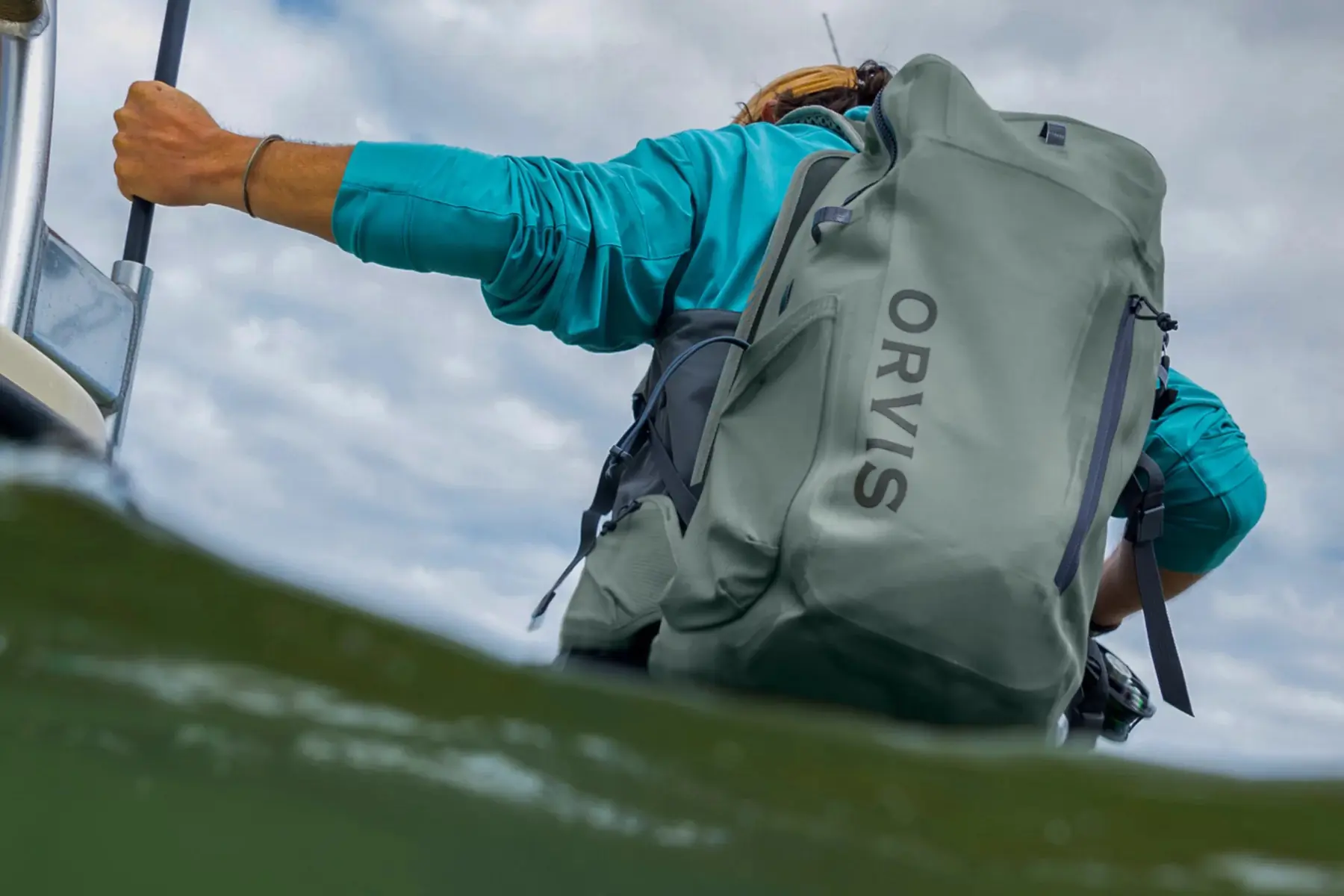



When I need a backpack on the flats, I wear a Breakwater Supply 25L Fogland Waterproof Backpack. This is a very feature-rich and affordable pack option sporting killer interior organization, an external waterproof pocket, mesh water bottle pockets, and loads of external attachment points for the gear you want directly on hand.
I’ll never go back to using a roll-top style dry bag after wearing this unit because of its superior organization. Nothing is more frustrating than digging around a single compartment like Mary Poppins for a small fly box!
It’s also worth noting that this is a great compatible pack for securing the YETI Sidekick to the front. My only real complaint here is the lack of a waist strap — this bag can start to feel heavy on the shoulders toward the end of the day when fully loaded.
The Orvis PRO 30L Waterproof Backpack is another stellar option, although pricier, which offers a bit more capacity and a waist strap for lightening the load. The mesh water bottle sleeves can secure a rod tube, which is an awesome feature for carry-on travel or for fishing with an extra rod.
The shoulder straps go on to feature handy tool docks for your forceps and nippers. This is another option with a great interior schematic for staying organized. I have a hard time keeping my flyline away from the buckles of the waist strap, but you may find this to be a non-issue.
Some other awesome waterproof packs I’ve fished with include the YETI Panga, Fishpond Thunderhead, and the Patagonia Guidewater Backpack.
Miscellaneous Gear & Gadgets
The little stuff often ends up being some of the most game-changing gear you bring. Here are a few miscellaneous items that have become staples for my flats trips.
Airflo Bonefish Polyleader: This handy piece of kit has really minimized the amount of time I spend building leaders on the flats. It’s a simple 7-foot section of clear, intermediate polyleader that sinks at roughly the same rate as the fluorocarbon you’d use for the butt section. Tie a perfection loop at the end and simply connect 4-12 feet of tippet up to 24-pound test. I was hesitant to cast with a perfection loop in the middle of my leader, but it turns over wonderfully.
Simm’s Guide Wet Wading Socks: This is an excellent quality wet wading sock for use day in and day out that won’t let you down. Designed to be quick-drying, odor-resistant, and anti-abrasive, this calf-height sock might be your new best friend if you’ve struggled to pin down quality wet-wading footwear.
Loon Outdoors Flexistripper Stripping Basket: If you’re used to utilizing a stripping basket, here’s a low-profile, travel-friendly option you can bring with you to the tropics. I’ve found that having about 30-40 feet of fly line in my basket while wading the flats is hugely advantageous, especially when you enter zones where the surf attempts to sweep your line away. It’s also a great tool for keeping your line away from your feet while fishing from the beach. I know fishermen that love ’em and some that hate ’em, so this is another personal piece of gear you’ll have to make your own decision on.
Loon Outdoors Hook Hone: It doesn’t take much wear and tear for a hook to lose its point. Owning a tool for quick touch-ups on the flats is a brilliant investment. This hook hone from Loon features two different grits. You can blast away rust and then file those hook points to be nice and sticky again. If you’re sharpening flies you’ve fished in previous years, do yourself a favor and double-check the overall hook integrity. Sometimes what looks like a little surface rust turns out to be a compromised hook.
Nocs Provisions 8X32 Zoom Tube Monocular: Having the ability to take a closer look at the features of the flats, distant coastline, and reef breaks is underrated. This is especially true on exploratory DIY trips where you need a decent lay of the land with limited time. Keeping a safe eye on your pals when you’re fishing miles apart without cell service doesn’t hurt either. The Zoom Tube by Nocs Provisions is a super compact, water-resistant, and rugged built optic that will help you investigate potentially fishy zones from afar.
Costa Sunglasses Cleaning Kit: A quick wipe with a microfiber cloth is good. A spray of anti-reflective lens cleaner and a wipe is better. Your eyes are everything on the flats, so keep your vision HD.
Reusable Zip Ties and Nite Ize Gear Ties: Perfect for building a handhold/leash for your SUP, securing miscellaneous gear to your pack, or lashing your rod tubes together for travel, having some gear ties will almost definitely come in handy. They’re cheap, easy to pack, and very versatile in their applications — this is a no-brainer.
Lip Balm Sunscreen: Getting a gnarly sunburn on your lips is a drag. If you’re not diligently wearing a buff all day, be sure to reapply sun protection to your lips often. It’s easy to forget. My general rule is that whenever I switch flies or build a leader, I reach for my lip balm. My current favorite brand is Protekt.
Reliable Tools/Apps for Weather, Wind, and Tides
If you’re serious about getting dialed into a new fishery, you’d be wise to find the best website, local resource, or app for reliable weather forecasts and tide charts. Don’t expect to check your phone’s weather app for an on-point forecast, especially in the developing world.
Finding success in far-away fisheries is all about usable data, so find out which resources are reliable and relevant before your trip so you can plan your days on the water accordingly. Maybe even keep a fish journal if you really want to nerd out.

